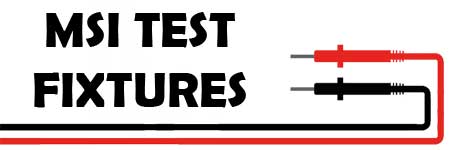 An in-line PCB test fixture, also known as an in-line test fixture or in-circuit test (ICT) fixture, is specialized equipment used for testing printed circuit boards (PCBs) during the manufacturing or assembly process. Unlike drop-in test fixtures, which are placed on top of the PCB, in-line fixtures are integrated directly into the production line, allowing for automated and continuous testing of PCBs as they move through the assembly process.
An in-line PCB test fixture, also known as an in-line test fixture or in-circuit test (ICT) fixture, is specialized equipment used for testing printed circuit boards (PCBs) during the manufacturing or assembly process. Unlike drop-in test fixtures, which are placed on top of the PCB, in-line fixtures are integrated directly into the production line, allowing for automated and continuous testing of PCBs as they move through the assembly process.
Key features and aspects of an in-line PCB test fixture include:
1. Integration with Production Line: The in-line fixture is typically placed at a specific point in the PCB assembly line, allowing PCBs to be tested without interrupting the production flow.
2. Automated Testing: In-line test fixtures are designed for automated testing, where PCBs are automatically fed into the fixture, tested, and then passed along the assembly line for further processing.
3. In-Circuit Testing (ICT): In-line fixture often use in-circuit testing techniques, which involve testing the electrical performance of individual components and connections on the PCB.
4. Flying Probes or Pogo Pins: In-line test fixtures can use flying probes or pogo pins to make electrical contact with the test points on the PCB. Flying probes are robotic arms equipped with test probes that move to various test points on the PCB to perform measurements. Pogo pins, similar to those used in drop-in fixtures, can also be used in some in-line test systems.
5. High-Speed Testing: In-line PCB test fixtures are designed for high-speed testing to keep up with the production line’s pace, ensuring that each PCB is thoroughly tested without slowing down the overall manufacturing process.
6. Test Coverage and Fault Detection: In-line test fixture can test a wide range of components and connections on the PCB, enabling comprehensive fault detection and quality assurance during the production process.
7. Data Logging and Traceability: In-line fixtures often include data logging capabilities to record test results and provide traceability, allowing manufacturers to track the performance of each PCB throughout the production process.
8. Customizable for Different PCBs: In-line fixtures can be designed to accommodate various PCB sizes, shapes, and layouts, making them adaptable to different product lines.
In-line PCB test fixtures are essential for ensuring the quality and reliability of PCBs in mass production environments. By automating the testing process and integrating it into the assembly line, manufacturers can efficiently identify defects, reduce production errors, and maintain high levels of product quality. Additionally, in-line testing helps prevent faulty PCBs from progressing further in the production process, ultimately reducing waste and improving overall production efficiency.
